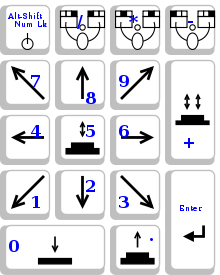First, it is important to understand what is assistive technology to begin with. To paraphrase many definitions that are available, assistive technology is the use of a device to assist with improving the function of the user. For example, a pair of glasses can be considered assistive technology as they assist with vision. A walker can be considered assistive technology as it helps with walking or ambulation. There are also different levels of assistive technology, and this can be broken down into low and high tech devices.
Low technology does not require a power source. Sometimes this can be the easiest and most practical of solutions in assistive technology. Low tech devices are items that facilitate independence in an area as does high tech devices. Examples of low tech are a cane for assistance with walking, a pencil grip for children with grasp issues, or even glasses to assist an individual with seeing their environment.
Even if an individual can benefit from high tech assistive technology, it is always important that they have a low tech "backup". Technology can fail, batteries die, and emergencies can happen. In these cases, an individual will continue to meet their needs using their low tech device. Also, low tech devices might be all a user needs. High tech is not indicated for everyone.
Before we discuss high tech devices, there is another classification that many individuals use, mid tech. The difference between mid tech and low or high tech is that mid tech has a battery source. Typically, they have limited capability but do have a power source. This can include communication devices that can be pre-programmed with single pre-saved phrases or simple remotes that can control an individual's lights.
Again, mid tech can also be an appropriate option for individuals. They are simple devices that can facilitate independence for the user.
High Technology:
Users of high technology are typically individuals with significant functional impairments. This can includes folks with spinal cord injuries, Lou Gehrig's disease, or muscular dystrophy. Examples of high tech devices are:
- Communication devices with alternative access methods such as eye gaze
- Stand alone environmental control units, with alternative access, that can control multiple devices in the user's environment
- Computer workstations with alternative software and hardware for access, such as a head mouse or dwell click software
Funding can be a challenge for these devices and they can be quite costly. Communication devices (or AAC devices) can often be partially covered by insurance companies. A qualified professional can assist with the selecting the appropriate device for the user's needs and goals, as well as obtaining funding for best device choice.
What have your experiences with these forms of assistive technology?









